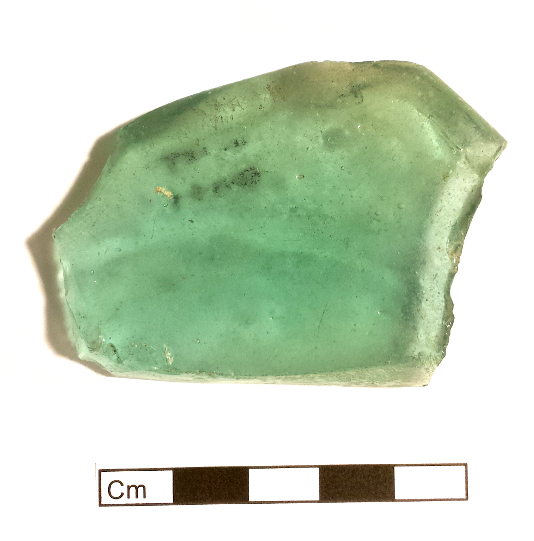 This is a fragment of the base of a Roman bottle. The age is undetermined but it is thought to be Late Roman (3rd century AD onwards).
This is a fragment of the base of a Roman bottle. The age is undetermined but it is thought to be Late Roman (3rd century AD onwards).
It is very well-preserved with no iridescence. It is an aqua colour, which is the common natural colour of untreated glass.
Roman glass items have been found across the Roman empire, and from a range of different contexts. The glass industry had a period of rapid growth in the first century AD and glass blowing was introduced. Glassblowing was strongly supported by the Roman government, and glass was being blown in many areas of the Roman world. On the eastern borders of the Empire, the first large glass workshops were set up by the Phoenicians, in the birthplace of glassblowing in contemporary Lebanon and Israel, as well as in the neighbouring province of Cyprus.
Everything from small containers and vials, bottles, elegant jugs, perfume bottles, cups, plates and ornaments were produced. Glass vessels were used as tableware, religious items, funerary goods, trade items, and for special gifts.